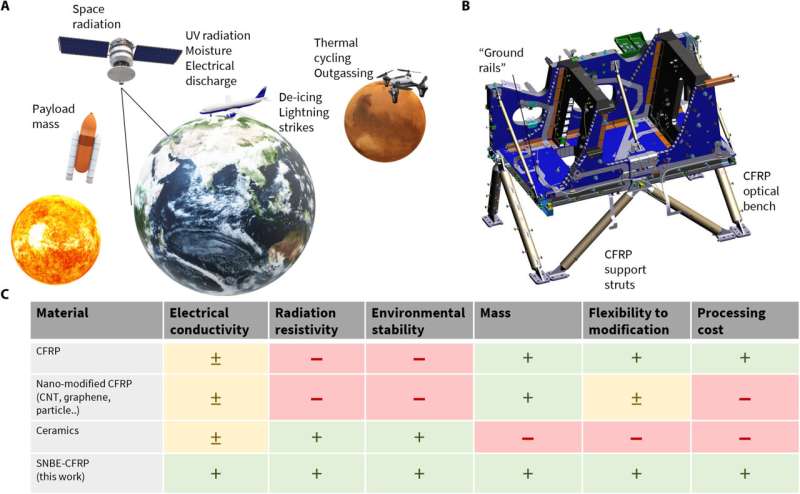This article has been reviewed according to Science X's editorial process and policies. Editors have highlighted the following attributes while ensuring the content's credibility:
fact-checked
peer-reviewed publication
trusted source
proofread
Ultra-lightweight multifunctional space skin created to withstand the extreme conditions in space

A new nanobarrier coating could help protect ultra-lightweight carbon composite materials from extreme conditions in space, according to a study from the University of Surrey and Airbus Defence and Space.
The new functionality added to previously developed 'space skin' structures adds a layer of protection to help maintain space payloads while traveling in space, similar to having its very own robust ultralight protective jacket.
The research team has shown that their innovative nano-barrier would help drastically increase the stability of carbon fiber materials, while reducing radiation damage.
Professor Ravi Silva, corresponding author of the study and Director of the Advanced Technology Institute (ATI) at the University of Surrey, said,
"Current aluminum shielding is not thermally stable or fully conformal, and therefore usually undesired for stable structures. Not to mention that aluminum shielding contributes to the mass and cost of satellites. Our nano-barrier addresses these issues and is a promising upgrade to the industry standard which could become a key accessory to all space and aircraft structures that are both mobile and static."
The coating is a highly dense superlattice structure applied to carbon fiber materials at room temperature which does not add over 1 μm of thickness, therefore keeping the materials lightweight.
The study has been published in Science Advances.
More information: Michal Delkowski et al, Radiation and electrostatic resistance for ultra-stable polymer composites reinforced with carbon fibers, Science Advances (2023). DOI: 10.1126/sciadv.add6947
Journal information: Science Advances
Provided by University of Surrey





















